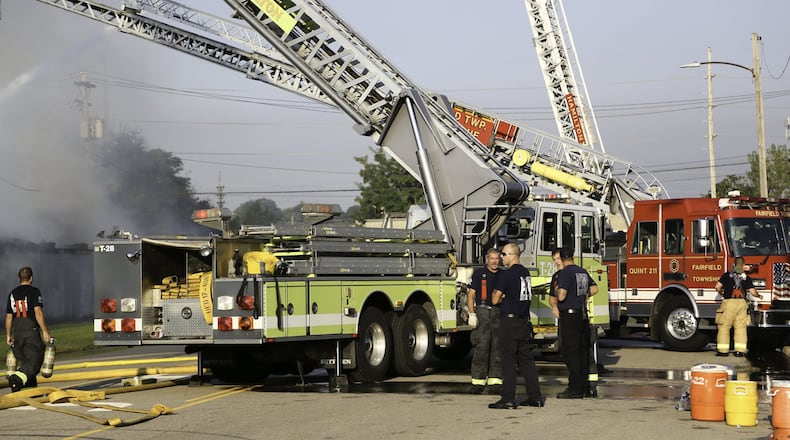Tom Vanderhorst, the city’s director of external services, said, “This is really being driven by pressures from the state. They have cut the local government fund. They actually will pay us up to $108,000 to consolidate these sort of services. This is something they’re actually striving toward.”
After Gov. John Kasich early this decade made deep cuts to several funds that used to go toward local governments, Hamilton and other cities have complained they still are feeling the pinch. They hope Governor-elect Mike DeWine will restore some of that funding.
Looking ahead to future years, “We’re really going to have financial difficulties without state assistance in local-government funding,” Smith said.
In another cost-cutting measure, Human Resources Director Letitia Block, a lawyer, will become the city’s law director, replacing the duties currently outsourced to Heather Lewis of the Millikin & Fitton law firm. That decision was mutual, according to a letter Lewis wrote Smith in late November: “We acknowledged that the contracted services with Millikin & Fitton were not economically sustainable for the firm, and a transition of those services back to the city would be mutually beneficial,” Lewis wrote.
“The general fund is balanced,” Smith told a council during a finance meeting on Friday. “We’re putting a bigger focus on public-safety capital — mostly on capital equipment, but also on fire houses.”
The city plans to use Community Development Block Grant funds to refurbish a fire engine for about $300,000, make about $170,000 in fire-station improvements and refurbish a medic vehicle for about $170,000.
The city also will spend money on the first segment of the Hamilton Beltline bicycling and walking path on the West Side.
“We will see construction in 2019,” Smith said.
Unlike many cities, Hamilton’s general fund is a very small part of its overall budget — less than 15 percent of all spending. The city’s “enterprise funds,” which contain its utility funds, are $213 million, or about 67 percent.
Of revenues that fund the general fund, 54 percent comes from income taxes. Tax revenues have flattened this year after rapid climbs earlier.
Some 70 percent of general-fund spending goes toward public-safety funding for police, fire, emergency squads and municipal court.
In 2012, council adopted a policy requiring that the city should have an unrestricted reserve equal to 10 percent of revenues to the general fund, and the city during 2019 should accomplish that, with $5.3 million, above the $4.6 million requirement.
Smith announced that while spending on personnel and benefits has been climbing each year since 2013, including for contracted services such as emergency 911 dispatching, parks and the law department that were contracted out to others, Hamilton’s personnel-and-benefits spending will be lower than it was in 2008, at the start of the Great Recession.
In 2008, general fund personnel and benefits spending was $38.2 million. In 2019 it is budgeted to be $37.7 million, including the spending on the contracted services. The city’s low-point on such spending was in 2013, when it spent $32.4 million.
“So we’re still below where we were at in 2008, but you can see that it’s trending up again,” Smith said.
Most of the reason for the increases has been added hires for police and firefighters and raises employees have received. The police department alone has about 140 total staff, and the fire department has more than 100.
A public hearing on the proposed budget will be held during Wednesday’s 6 p.m. City Council meeting in council chambers on the first floor at 345 High St. During the public hearing, Smith will offer a presentation explaining the budget. He also has said he is willing to give a similar presentation to groups in the city. Council may approve the spending plan during its Dec. 12 meeting.
About the Author
